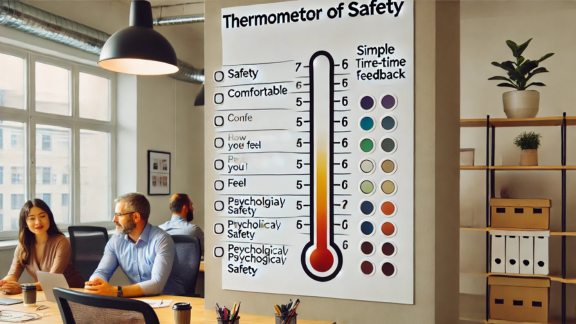
Chapter 4
Psychological Safety
“Safety doesn’t happen by accident; it requires deliberate practice and unwavering attention.”
– Adapted from organizational psychology thought leadership



Make reflection ongoing
Psychological safety isn’t a one-time achievement—it’s a continuous process.
Encourage regular debriefs to keep communication channels open.
After each major project milestone, ask, “What do we feel good about, and what do we want to improve?”






Address breaches quickly
When psychological safety is broken, swift, honest conversation helps repair trust.
Unresolved issues fester, so tackle them early and head-on.






Celebrate constructive risk-taking
Reward and highlight scenarios where someone tried something new—even if it didn’t work perfectly.
Recognition reduces fear of failure and fuels innovation.
During team meetings, offer a “Bold Move of the Week” shout-out to someone who experimented or shared a new idea.






Encourage self-disclosure
According to Brené Brown, vulnerability is a key to deeper connection.
Small acts of self-disclosure set a tone of openness and emotional safety.






Measure psychological safety overtly
Use surveys or open-ended feedback sessions to gauge how safe people feel.
Tracking progress ensures initiatives remain effective and relevant.
Ask, “On a scale of 1–10, how comfortable are you raising a sensitive issue here?” and adjust strategies based on responses.






Feel free to share with your colleagues
Give feedback, ask questions or request new resources


